A few days back while we were roaming in the Tysfjord region just south of Lofoten, the forecast predicted two days of heavy rain. Daniel, Jon and I opted for an indoor activity somewhat out of the ordinary. We were moored up in the settlement of Musken, located about five hours´ sailing time into the Hellemofjord.
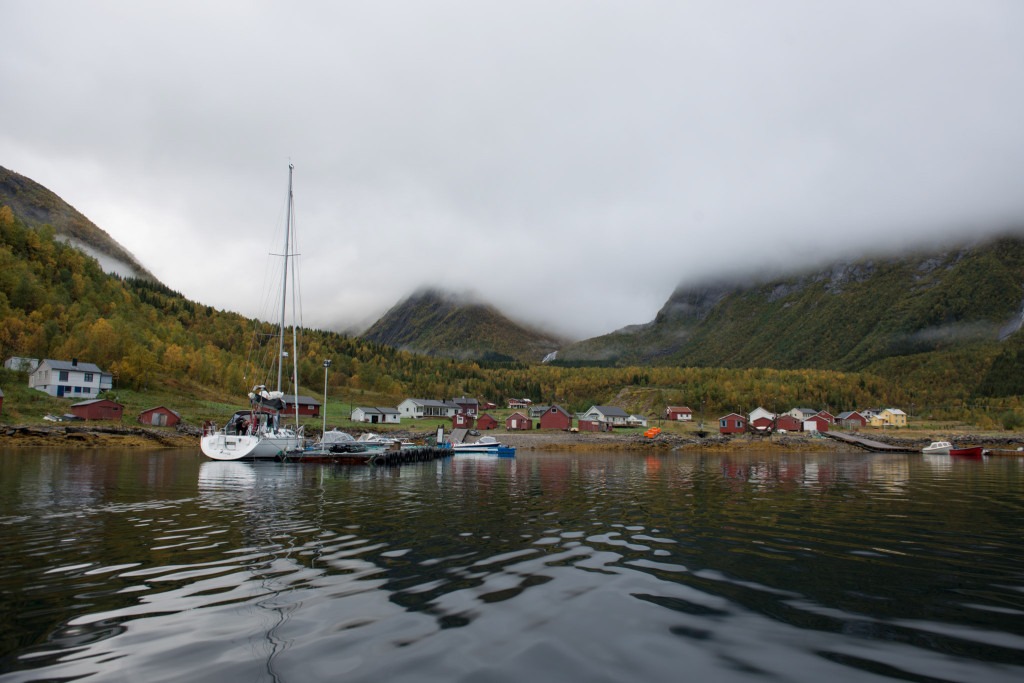
Barba moored in Musken, one of very few mainland communities in Norway with no road connection. By Daniel Hug.
The indoor activity in question was to traverse the cave Raggejavreraige. At 580 meters (1,900 ft) deep, it is the deepest cave in Scandinavia and the only known deep cave north of the Arctic Circle. The cave has been dug out by a river from about 600 meters altitude, with one known exit 100 meter above sea level as well as another exit right at sea level and numerous exits under water. There is little information available about the cave itself. I had managed to get hold of a scanned version of a paper chart of the cave. We also found a close up photo of the cave entrance and exit from an Italian crew that traversed it a few years back.
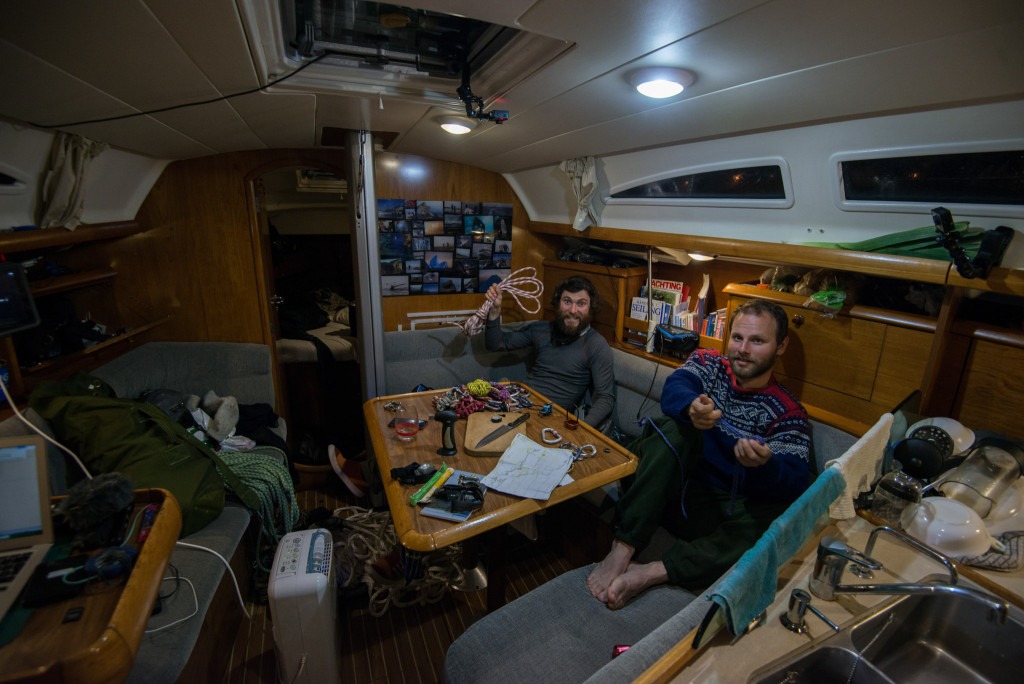
Preparing for the cave, with the not-so-detailed yet crucial chart lying on the table. By Andreas.
Despite limited information, we were up for the challenge. We had bought 3 coveralls in Harstad. With a combination of climbing and paragliding helmets as well as headlamps we looked somewhat like cave explorers. From the information we had available, we knew that getting lost in the cave was a potential issue – particularly in the lower parts, where tunnels spread out like the roots of a tree.
Daniel and Andreas paddling back to Barba after the first cave visit. By Jon Grantangen.
To ensure the success of our expedition we used the first day to explore the lower part of the cave. We could see the exit through our binoculars from the fjord. Daniel and I paddled the dinghy to the fjord cliff, while Jon was looking after Barba. Following a 100-meter climb up a hill, we entered the cave. From the map we could read “the mistral passage.” We had to crawl into the entrance where we were met by a rather stiff and cold breeze. It was dry, and spirits were high as we walked, crawled and climbed our way into the mountain. As two clever boy scouts, we left pieces of paper towel at every critical point where the paths divided. After a while, we realized that we were going more down than up, and the cold breeze was coming from the wrong direction (we should have been going against it, and not with it). After about an hour and a half we found footprints. This initial joy was replaced by dismay when we realized that the footprints were our own. Somehow, we had been walking in a circle. We accepted defeat, and followed our paper towel track back out to daylight.
Low-tech cave markers in production. Note skillfully drawn directional arrows. By Jon Grantangen.
Back in the Barba HQ, Jon and I prepared for the second reconnaissance mission. We added a compass to our inventory kit, and we drew black arrows on the paper towels, which would give us direction in addition to a known point of passage. Once again we crawled into the cave. As the river has dug its way through the sandstone, massive blocks of rock have fallen down in its path. In some cases we could climb over the blocks, but quite often we had to crawl under them through passages barely large enough for a Barba cave explorer. This time we were more successful. After close to two hours of crawling and cave yoga we managed to get 450 meters into the mountain. We were met by a vertical shaft and could go no further. This pronounced feature on our cave map was the purpose of our endeavor. We knew that once entering from the top of the cave, we would be able to find our way through the critical lower path.
Jon at the upper cave exit. By Daniel Hug
Back in Musken, located about 4 kilometers from the cave exit, we had a chat with the friendly locals. From what they knew, no-one had been through the cave this year. They showed us the track to get on top of the mountain. We were told that the cave entrance would be next to some green plains.
The hike to the summit. By Daniel Hug
Wet and cold at the cave entrance. By Daniel Hug
The next morning we took the dinghy to get us to the overgrown path leading to the mountain summit. In addition to obvious cave gear, we had a climbing rope as well as two 100-meter-long mooring ropes from Barba. These would be with us, as a backup should we encounter difficulties descending a total of 240 meters of vertical walls inside the cave. A two-hour hike up the mountain in pouring rain followed. After an additional half an hour of searching in dense fog we found the green plains described by the locals, and shortly thereafter we positively identified the cave entrance with the help of the photo from the Italian expedition.
Jon, our path-finder, discussing the route with Andreas. By Daniel Hug
We felt like three hobbits from Lord of the Ring as – cold, wet and miserable – we slipped into the darkness of the cave. Ahead of us we had a 500-meter vertical descent and about 800 meters to cover horizontally in the labyrinth of cave. We were met by the same strong breeze from the previous day. It was cold and humid but obviously not raining, so we were overall quite pleased. Having changed into our dry and stylish-looking cave gear, we pushed on. The passage was more pronounced than at the lower part. It still involved crawling, climbing and occasionally walking. Before too long, we faced the first 60-meter vertical shaft. We knew we were on the right path as we found 10-year-old ropes left behind by previous explorers.
Daniel – our mountain guide from the Alps and by far the most experienced climber among us – had the honor of going first. We secured him with our climbing rope. Rappelling down, he checked the condition of the old rope. We saw the light disappear into a dark hole. Shortly thereafter, Daniel confirmed that he was safe and sound 60 meters below us over the handheld VHF. Jon and I followed. It was a strange feeling, rappelling down in complete darkness well inside the mountain massif. From there, it was no longer a realistic option to climb back up again. We had only one way to go, and that was deeper down into the cave. After the rappel, we worked our way through what the map described as the “wolf walk.” Crawling through the narrow passages, pushing our backpack in front of us, we faced yet another shaft. This was a 140-meter vertical dark hole.
Jon rappelling next to the river that carved out the cave. By Daniel Hug
We once again saw Daniel´s headlamp disappear into the darkness. We were not alone in this shaft. Next to us was a roaring waterfall. Over the VHF, we got the message that Daniel had secured himself to the wall, allowing Jon to go rappel down the 50 meters or so. I was alone on my small cave recess, waiting for the tension on the rope to be released so I could follow on. There by myself it felt like the ultimate test in my confidence for my two Barba comrades. After cave philosophizing for some time in the darkness, I was next. The feeling of rappelling inside a mountain is quite extraordinary. Dangling there on the wall in utter darkness I had to untie myself from one rope to get secured to the next one, enabling the next leg of the 140-meter cliff. And so it went for several lengths of ropes, with the last person bringing with him our own climbing rope. It was a great relief to be reunited with the bearded caveman face of Daniel at the bottom of the shaft as well as Jon with the cave map. We enjoyed a late lunch. During our entire sail expedition we had never been as isolated and as far away from help as we were inside the cave. It had taken us 6 hours of crawling and rappelling to get there, but still hours remained before we would be able to reach the exit.
The razor passage. By Daniel Hug
Half an hour of horizontal walking and crawling followed before the path once again plummeted. From the map we could read “Razor passage.” The cave surfaces left little doubt that we were at the right location. The tunnel was covered in a razor blade-shaped surface of rock. A 60-meter climb down through this fascinating rock formation was our next challenge. At the end of it, we were met by a rope and a 35-meter rappel. I had the pleasure of going first. Hanging freely in a massive 20-meter wide and 100-meter-high shaft, it was our last stretch of rope.
The last rappell. By Daniel Hug
Once at the cave floor, we finally had a feeling of absolute certainty that we would find our way out. This was the very location Jon and I had reached during our route finding mission. We followed our paper towel trail for about an hour until we could finally crawl out into open air. Having spent 9 hours in total in the darkness, fresh air and a clear sky filled with stars was quite a treat. Tumbling down the last 100 meters of the cliff to the fjord, we sat down and congratulated ourselves on our latest adventure. And I was reunited with my ocean element. The coverall was replaced with a dry suit we had left onshore the previous day. A 2-km stretch of swimming along the fjord cliffs followed to where I could recover the dinghy. Late at night, we were all back onboard Barba, after having spent a total of 14 hours on the cave excursion. It had been for all of us a life adventure highlight.
Jon admiring the cave wall. By Daniel Hug
The following day we sailed into the very end of the fjord, to a place called Hellemobotn. Jon, who has walked the entire length of Norway, led the way as we hiked about 5 kilometers to Sweden, thus traversing Norway at its narrowest path. It was some of the most spectacular landscape we had seen to date, and a marvelous contrast to the darkness of the cave from the previous day. Rather self-satisfied, we sailed out the fjord, along the way picking up Terry, who had been on a week´s shore leave with her parents. We were not done with the Tysfjord region yet, however. On the horizon we could see Norway´s national mountain, Stetind, which would be our next milestone along the coast of Norway.
Andreas
Featured photo byDaniel Hug. Below, photos from our excursion to Sweden.
In Hellemobotn.
In Sweden, with flat plains and grazing reindeer in the background.
Hiking across the salmon river in Hellemobotn. Photos by Andreas.

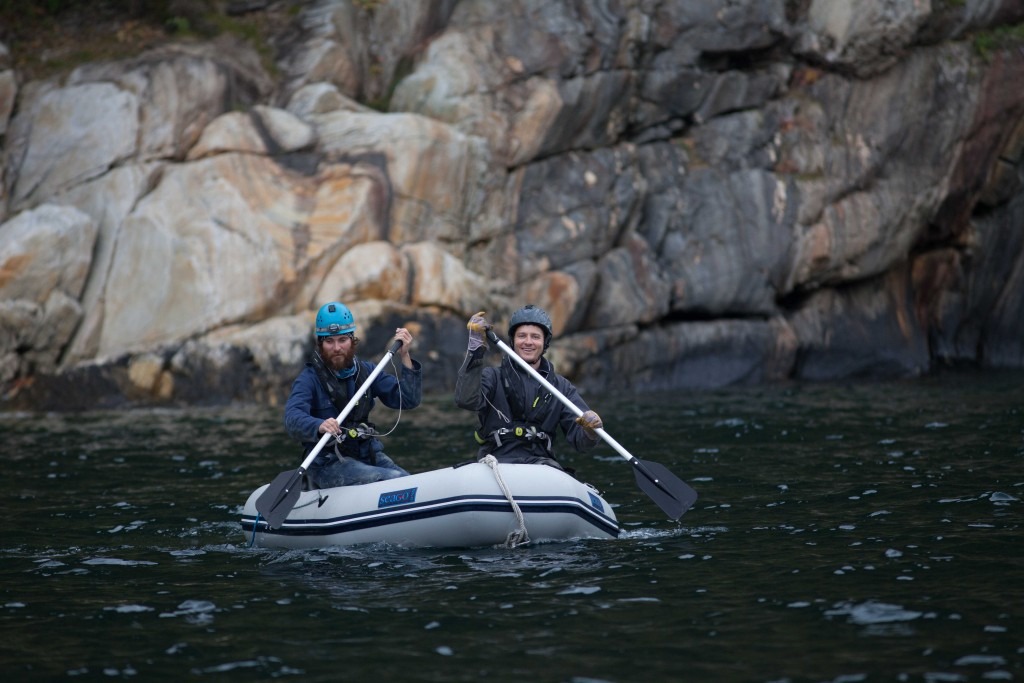
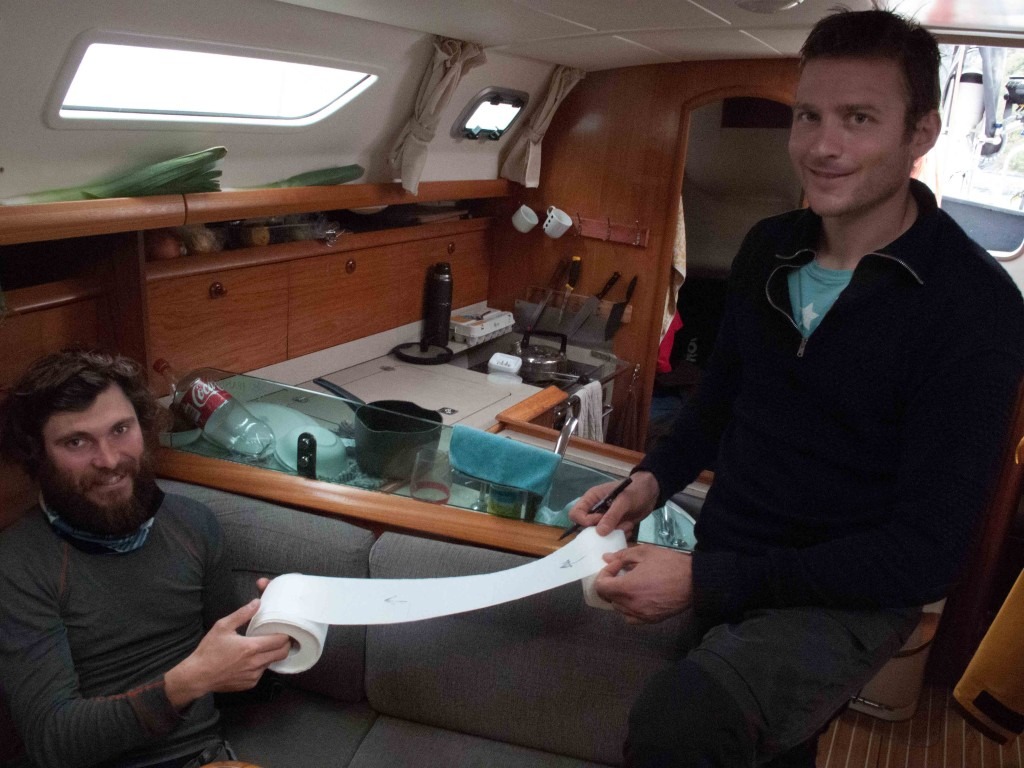
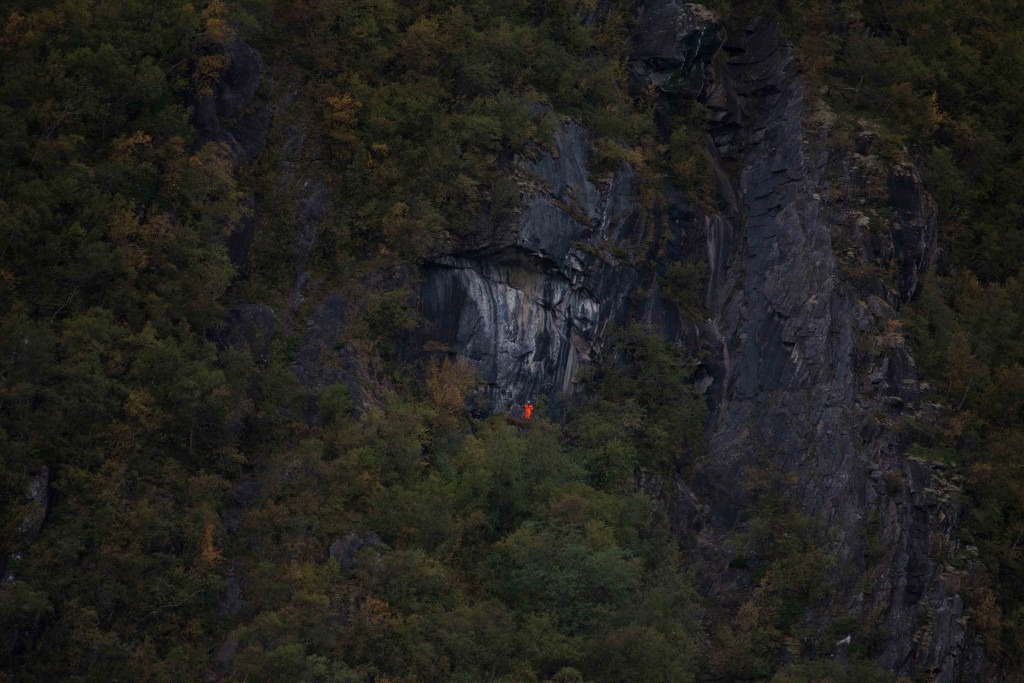
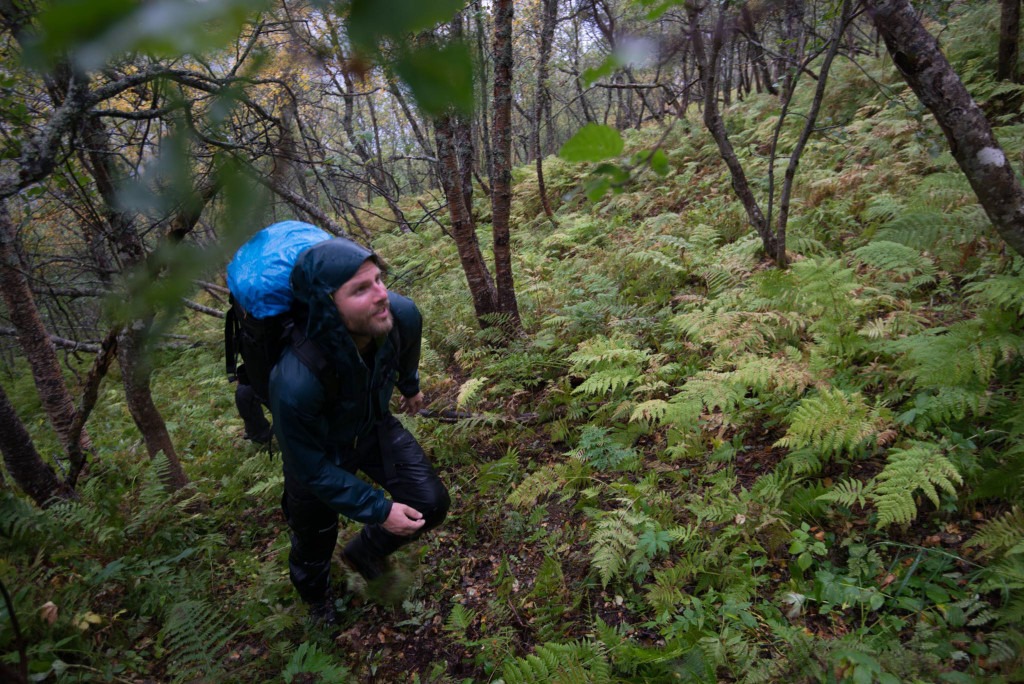
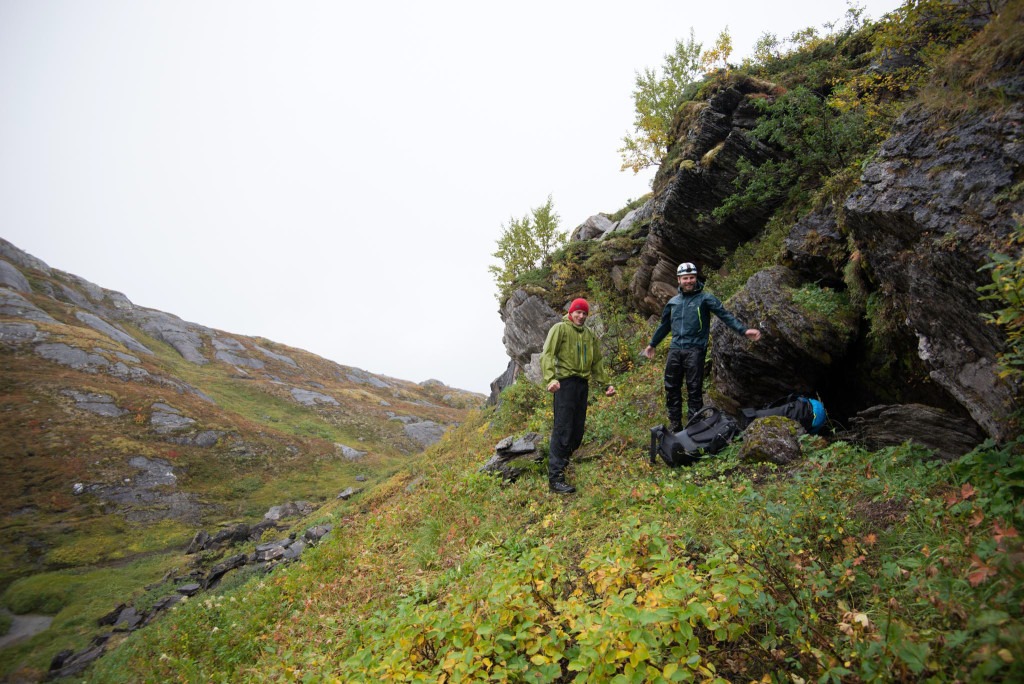

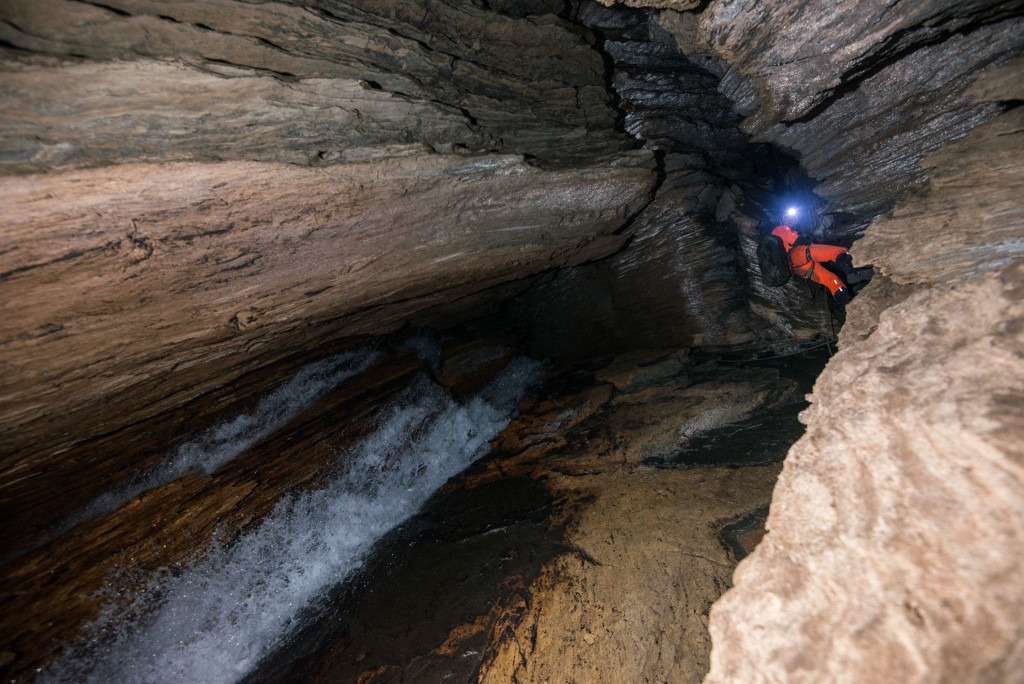
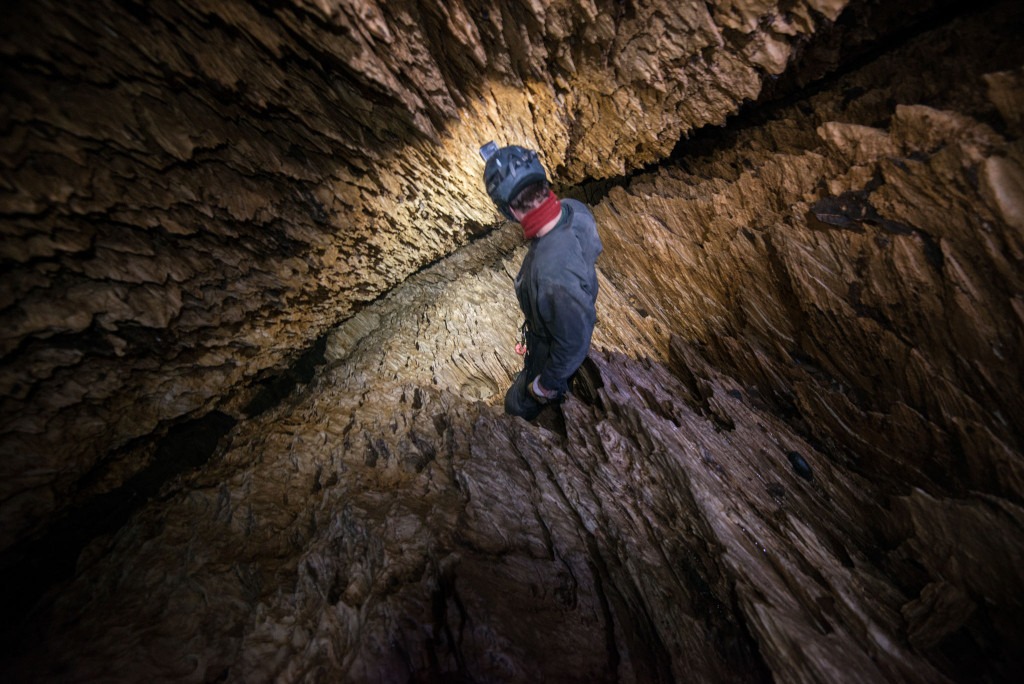
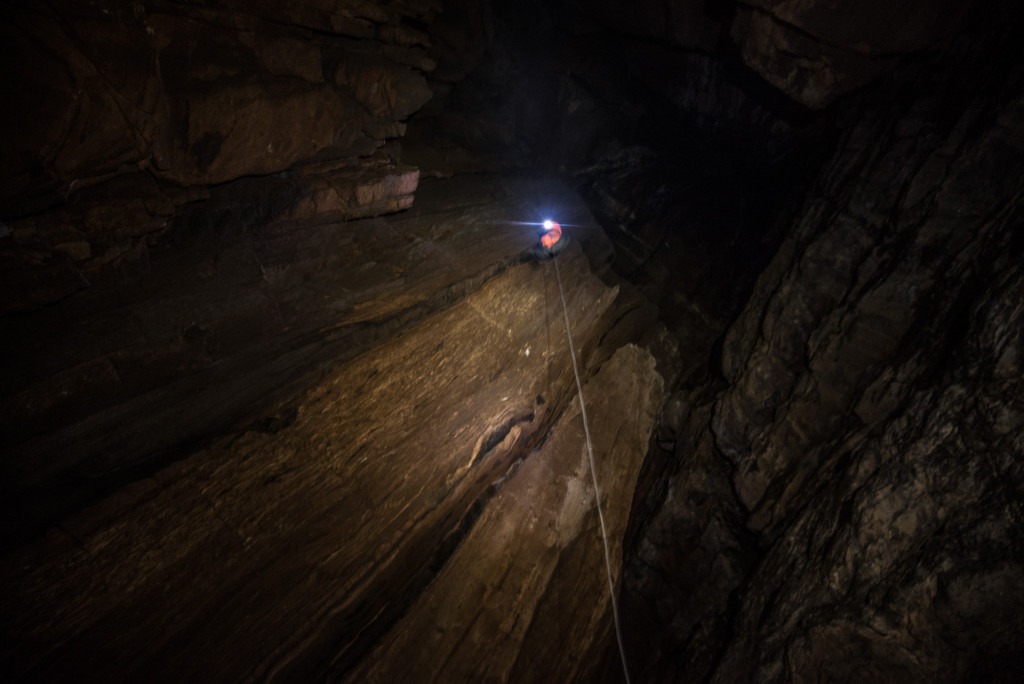
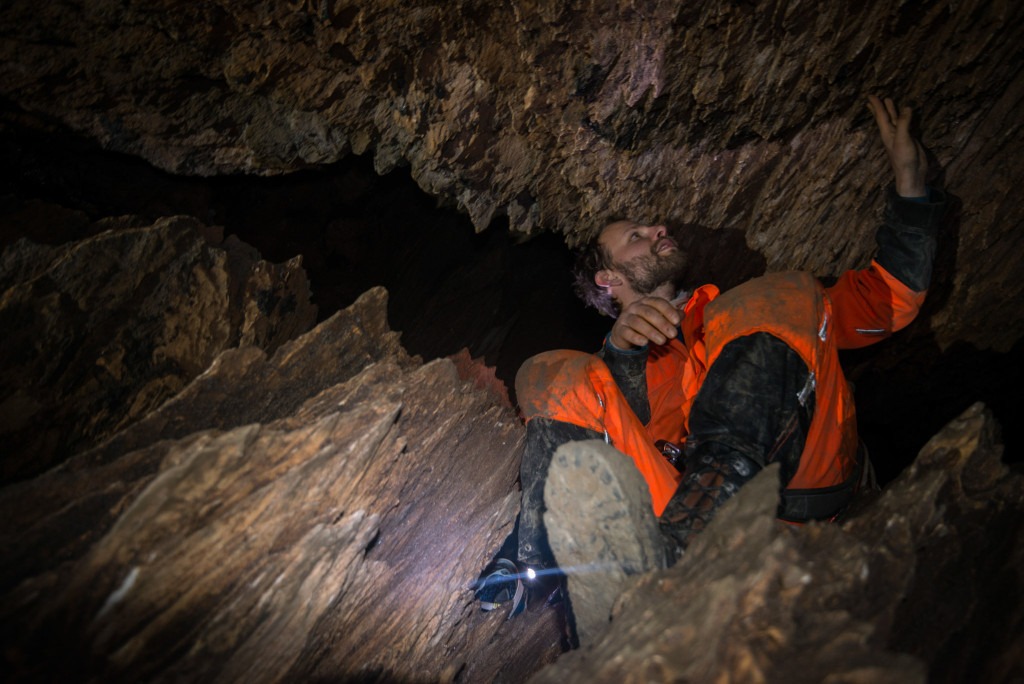
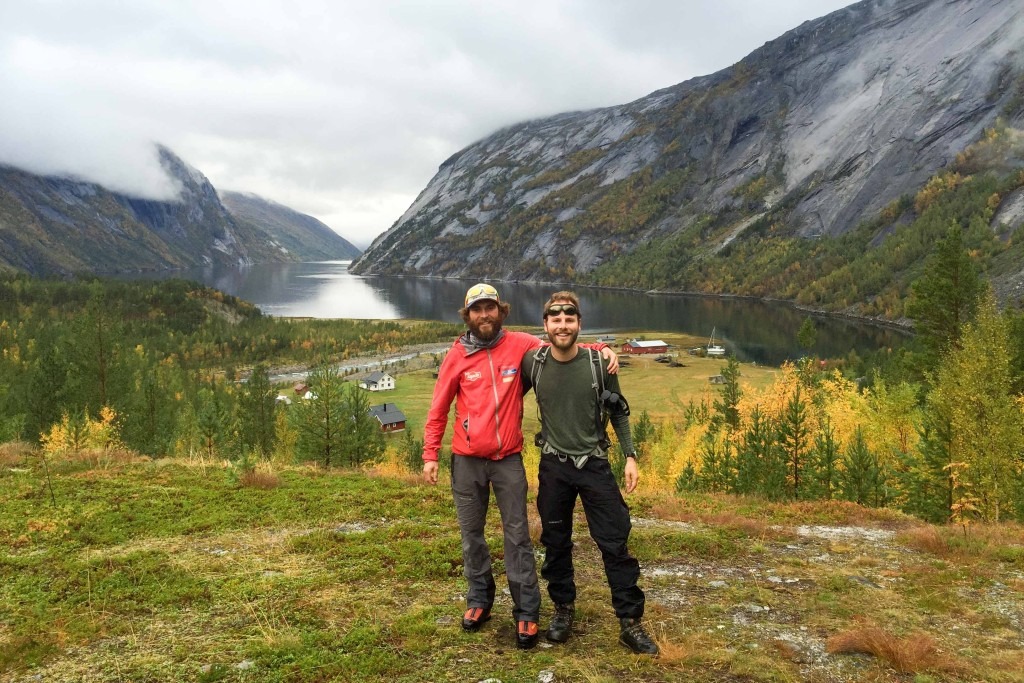
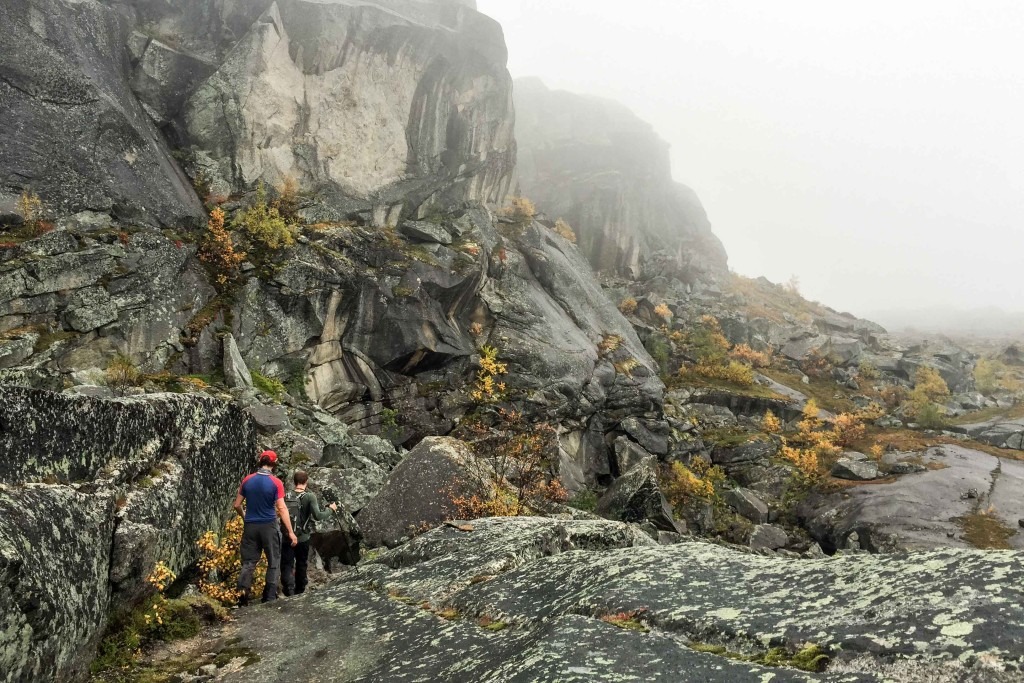
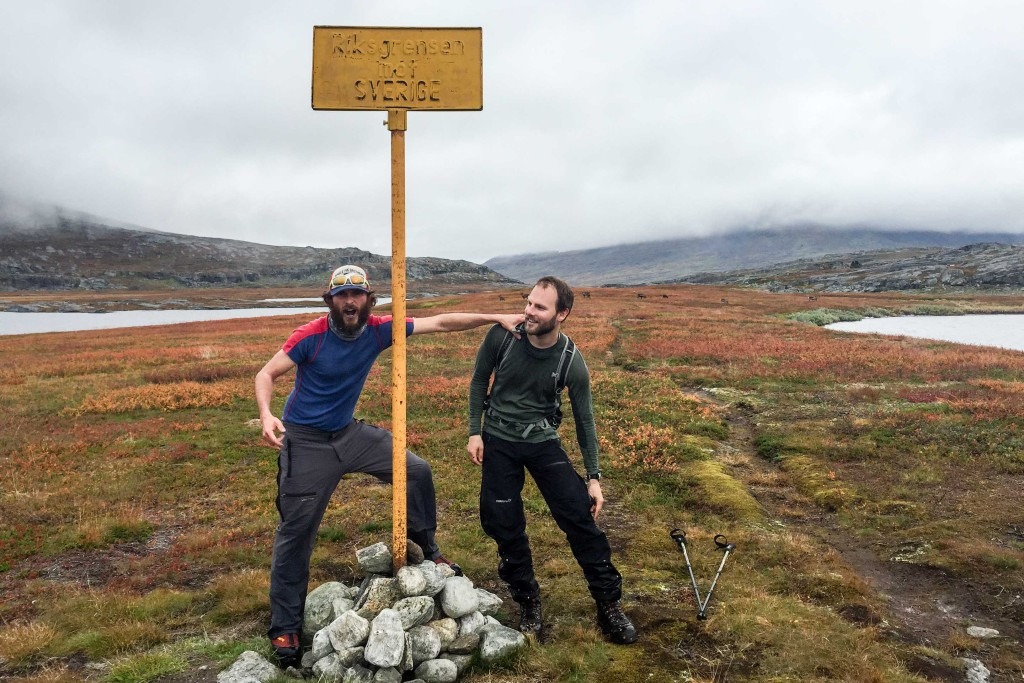
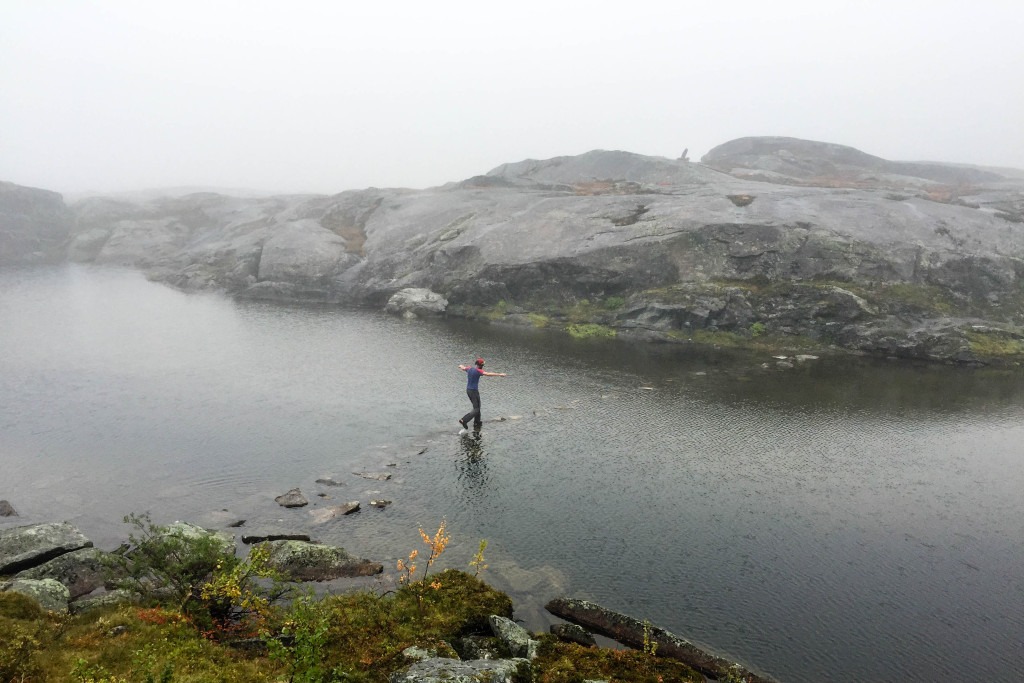
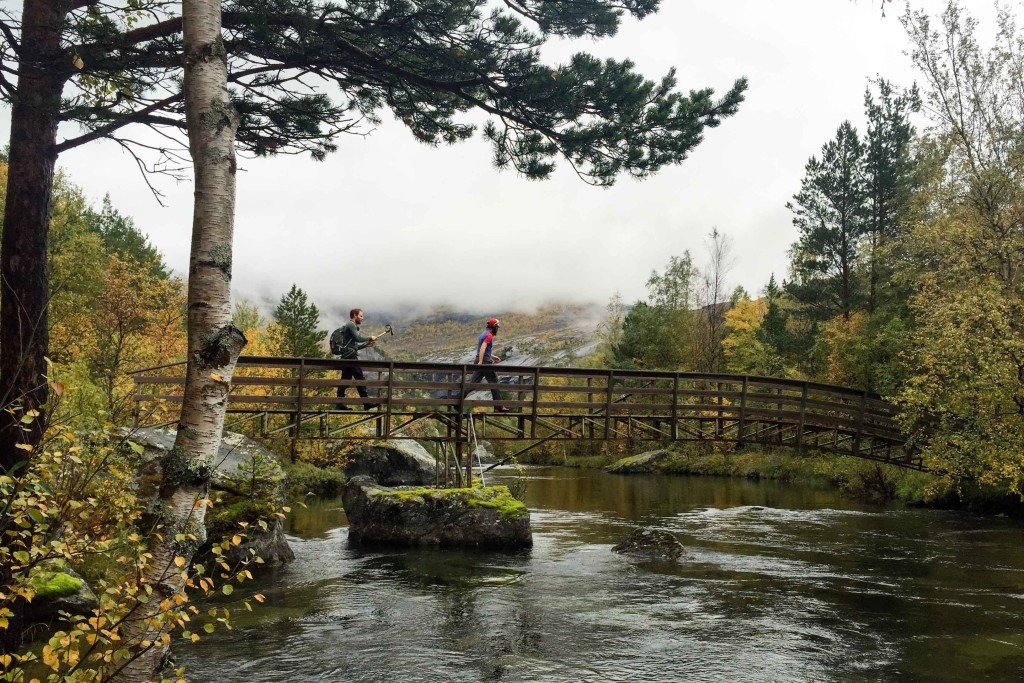

This sounds exciting and very interesting.One question from my office: Did you see any Cave-Goblins in there? I know that there should be a Lap Goblin society hiding in the Mountain from ancient times. Ulf
Ulf, we saw things in that cave we cannot write about! However, I could be convinced to tell you about it over a bottle of Bordeaux once back in Stavanger 😉 Hilsen Andreas
That will be fine! Fetter Ulf
Andreas, Dani, Jon: Amazing, and amazintly wonderful. And yet scary right up to the moment I read of your safe arrival back on Barba (even though I knew by then of that happy conclusion). An extraordinary accomplishment, one of many. I’m proud to have met you all, and so happy with yet-another successful safe-ending.